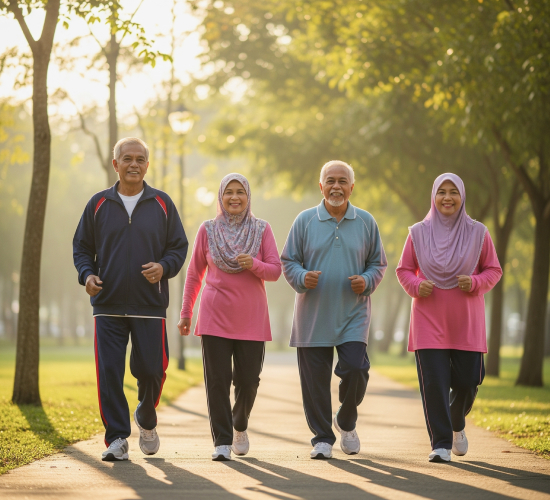

As we gracefully age, maintaining physical activity becomes increasingly vital for overall health, independence, and quality of life. While many exercise options exist, from high-intensity aerobics to strength training, one simple yet profoundly effective activity consistently stands out as the best exercise for seniors at home and outdoors: walking. Often underestimated, walking offers a remarkable blend of accessibility, safety, and comprehensive health benefits, making it an ideal cornerstone for any senior’s wellness regimen.
This article will explore why walking is arguably the most beneficial form of physical activity for older adults, delving into its diverse advantages and providing practical insights for incorporating it into daily life, if you’re looking for exercise for seniors over 60 at home or outside.
Walking’s primary appeal lies in its inherent simplicity and low barrier to entry. Unlike many other forms of exercise that require specialised equipment, advanced coordination, or a gym membership, walking demands little more than a comfortable pair of shoes. It is a low-impact activity, meaning it puts minimal stress on joints, which is a significant advantage for seniors who may be dealing with conditions like arthritis or recovering from injuries. This gentle nature makes it highly sustainable, allowing individuals to maintain consistency over the long term without undue risk of injury. Furthermore, walking is incredibly adaptable, easily modified to suit varying fitness levels and environments, from a stroll in the park to a brisk walk on a treadmill.
The physiological advantages of regular walking for older adults are extensive and well-documented:
Beyond the physical, the benefits of walking extend deeply into mental and emotional health:

For seniors who prefer or require indoor options, walking remains an excellent choice. Exercise for seniors over 60 at home or exercise for seniors over 80 at home can easily involve walking in place, using a treadmill, or following guided walking videos. Many online resources offer routines specifically designed for indoor walking that incorporate varying intensities and movements to keep it engaging. For those able to venture out, parks, local pavements, and even shopping centres (especially during bad weather) offer safe and accessible environments. When considering the best exercise for seniors at home, versatility is key, and walking delivers this in spades.
Yes, we know the real challenge lies in starting and staying motivated enough to continue a walking routine. Here are a few practical tips to get you going:
Walking is an unparalleled exercise option in the quest for sustained wellness during senior years. Its simplicity, low-impact nature, and profound benefits across physical, mental, and emotional domains make it the best exercise for seniors at home and for those who enjoy the outdoors. From strengthening bones and boosting heart health to lifting spirits and sharpening the mind, the act of putting one foot in front of the other offers a holistic pathway to a healthier, more independent, and more joyful life. For anyone seeking practical exercise for seniors over 60, embracing regular walking is a powerful step towards enhanced well-being.
Sources:
Spread the love, follow us on our social media channels